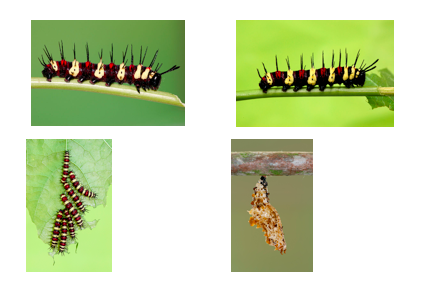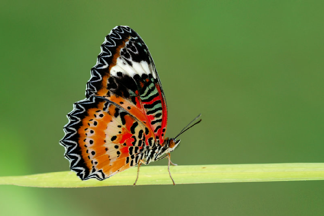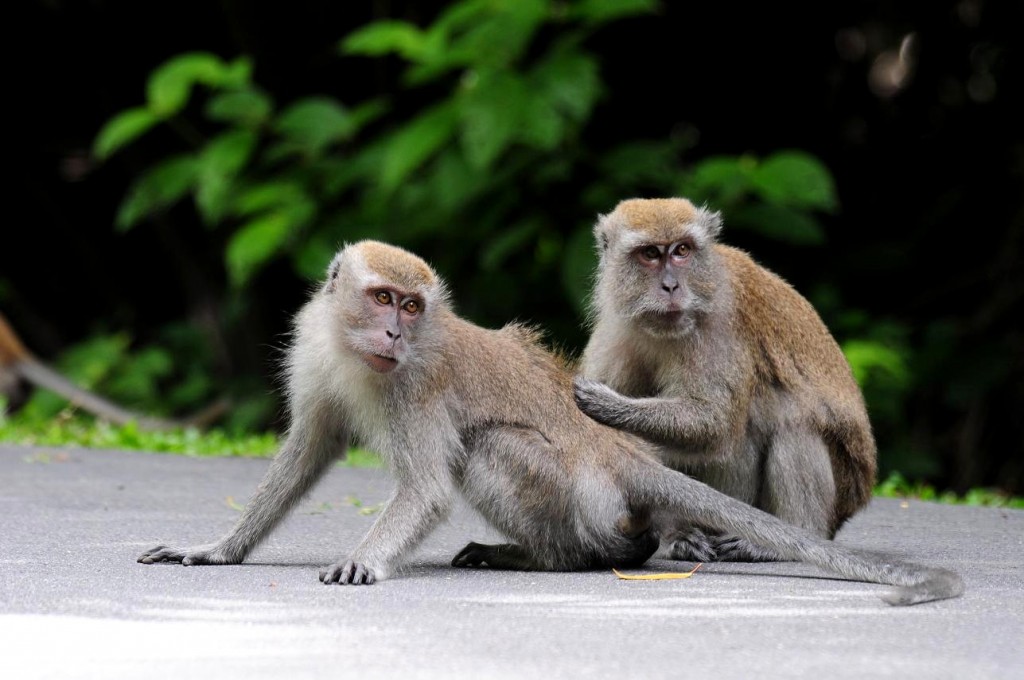Butterfly Breeding At Home!
Butterflies can be seen in parks and gardens, where there are plants which provide them with food. But did you know that you can also experience the process of metamorphosis in your own home?
With a simple butterfly breeding kit, you can rear caterpillars and watch them go through the complete life cycle of feeding, growing and transforming into beautiful butterflies. All you need is a transparent container with a lid that has a few small holes in it. You can wash and recycle a takeaway plastic food container, then make the holes using a heated screwdriver. You can also purchase a container or adapt one from your existing household items, such as a laundry basket or even a fish tank.
Butterfly caterpillars are picky eaters. Unlike moth caterpillars, caterpillars of butterflies only feed on specific host plants. This is why it is important to provide them with leaves from the correct host plant, which provide a food source for the caterpillar throughout its larval stage. As the caterpillar grows, it undergoes a series of transformations where it sheds its exoskeleton. Through each stage, you can notice distinct changes in the caterpillar’s body proportions, colours and patterns.
A DIY breeding kit made out of a takeaway food container
|
Butterfly Life Cycle Terms Each stage of the butterfly life cycle is also called an ‘instar’. Egg – the first stage Larva – the second stage, when it is also known as a caterpillar Pupa – the third stage, when the caterpillar spins a pupal case, also known as a cocoon, and stays within Butterfly – the fourth and adult stage Eclose – the emergence of the adult from the pupal case Exoskeleton – an external covering that provides protection for an organism (such as a caterpillar) |
To get started, carefully collect the eggs or caterpillars from the host plants, and place them in the container. Keep the container away from direct sunlight, and avoid handling the container unnecessarily. To feed the caterpillars, just add fresh young leaves from the host plants. Clean the container every few days to clear dried leaves and frass (i.e. droppings).
Once the caterpillar is ready to pupate, it will climb to the sides of the container, attaching itself either to the side of the container or on the lid. You should check on the pupa frequently. In some instances, it may turn black, which means that it has been attacked by parasites and will no longer develop. Be mindful also of flies and wasps, which are parasites that prey on caterpillars during the larvae or pupae stage.
Different species will take different periods of time to transform between each phase. As a general guide, most species spend three days as an egg, one month as a caterpillar and one week as a pupa.
After the butterfly ecloses, or emerges from the pupa, it will take around two hours to be active. A large tank, in this case, would provide sufficient space for a butterfly to spread its wings soon after emerging from its pupa. And finally, when the butterfly has eclosed, remember to release it back in the area where you first found the eggs or caterpillars.
|
This list of butterflies and host plants will help you get started on your DIY butterfly breeding adventure! |
|
|
Butterfly species |
Host plant |
|
Cethosia cyane (Leopard Lacewing) |
Passiflora foetida (Stinking Passionfruit) |
|
Doleschallia bisaltide bisaltide (Autumn Leaf) |
Asystasia gangetica (Common Asystasia) |
|
Pachliopta aristolochiae asteris (Common Rose) |
Murraya koenigii (Curry Bush)Citrus grandis (Citrus plants) |
|
Papilio demoleus malayanus (Lime Butterfly) |
Citrus spp (Citrus plants) |
|
Danaus chrysippus chrysippus (Plain Tiger) |
Asclepias currasavica (Blood Flower)Calotropis gigantea (Crown Flower, Giant Milkweed) |
|
For more information on butterflies and their respective host plants, check out the book “A Field Guide to the Butterflies of Singapore” by Khew Sin Khoon. Take part in our contest to win a copy of this book! |
|
By Nur Liyana Zolpakar








Have views or comments on this article? Let us know via this form. If you would like to give us feedback on any other areas relating to our parks and gardens, please submit via https://www.nparks.gov.sg/feedback